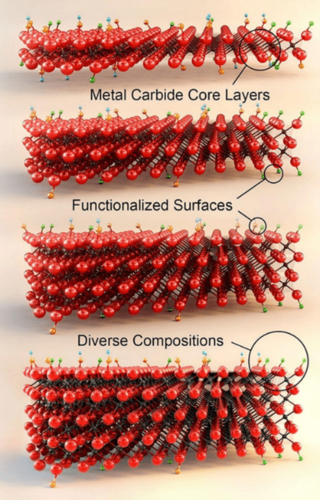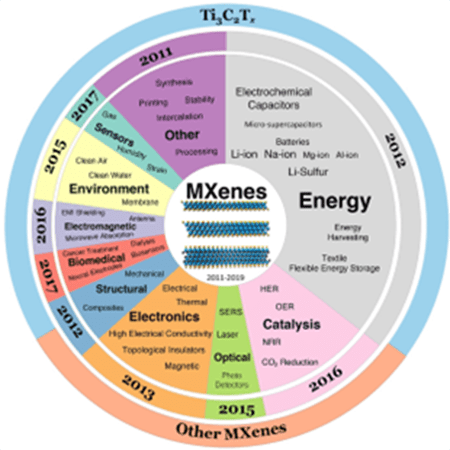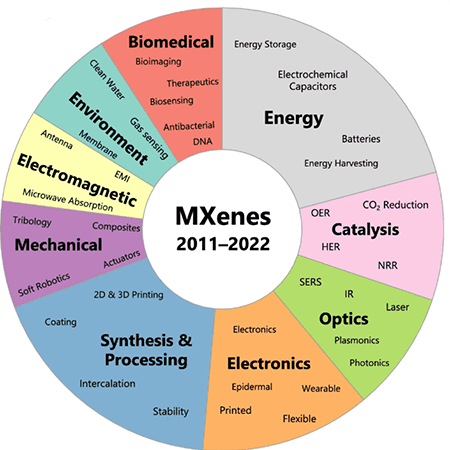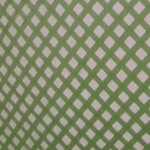By Cynthia Gosselin, Ph.D., The ChemQuest Group
In the old days, the idea of “smart paints” was considered more in the realm of animated entertainment—things of cartoons, science fiction, and adventure movies. Coatings had the ability to morph into superheroes, attack the enemy, or make evil disappear. In 1931, Dick Tracy started the first Internet of Things (IoT) with his two-way radio wristwatch, funded by a billionaire industrialist. Movies also challenged our technological imagination. The active camouflage that made a car invisible in the 2002 James Bond movie Die Another Day is now an actual coating used by the military for blending heavy equipment into a changing hostile environment. Q would be proud!
More recently, marketing departments have identified “smart paints” as just about any coating that does more than simply decorate. The definition was expanded to paints that offered what were portrayed as incredible features. Self-cleaning, self-healing, anticorrosion, self-cooling, photoluminescent, antimicrobial, photocatalytic, anti-icing, antifingerprint, insect repellent, as well as antigraffiti paints, are all examples within the smart paint universe. Some even opine that paints that exhibited metamerism when oriented differently were smart.
Currently, there is not a universal definition for smart paints, at least not one that provides agreement on what paint characteristics are included or how to quantify the market size. For now, smart coatings mean many different things, taking on a variety of forms in multiple categories. Everyone agrees, however, that smart paints do add some level of value.
The deeper discussion centers around exactly how the extra functionalities perform when in contact with outside-the-paint conditions. My idea has always been that smart coatings should have a sort of interactive AI component, a personality, rather than just a passive utilitarian function. In any event, many formerly imaginary enhancements have become everyday products available at big box stores.
21st Century Smart Paint
Oleg Figovski, director of R&D for INRC Polymate (Israel), Green Coatings, Inc., and Nanotech Industries, Inc. (USA) has what could be the best definition for smart coatings that encompasses the changing landscape: “Over the years, smart coatings have been tacitly defined as the most functional of coatings. However, that functionality of coatings and other materials has changed, and a coating that might have been thought of as smart in the past may not be considered as such now. Over time, one generation of smart coatings becomes merely functional, and a new generation of coatings takes over in the smart market category.”
If paint is to have an “AI component,” the definition given by Professor Jamil Baghdachi at The Smart Coatings III Conference in February 2011 underscored the interactive definition of functionality. He stated, “Materials that are capable of adapting their properties dynamically to an external stimulus are called responsive, or smart. The term ‘smart coating’ refers to the concept of coatings being able to sense the environment and make an appropriate response to that stimulus.”
Of course, the basis of a responsive system is the development of the requisite technology. That first line development often originates in start-up companies that can concentrate on the molecular details without worrying too much about commercialization. Next, the technology is somehow applied to an unmet need in a novel way. If successful, the smart paint innovation will find its way into the commercial arena.
There are quite a few new smart-coating applications that satisfy this responsiveness criterion. In many instances, the “active ingredient” is a specialized additive that communicates with a particular environmental stimulus to provide a solution. This article covers four smart paints that are activated by very different technologies.

Seeing Eye Paint
One example began in 2016 at the Ohio State University’s MetroLab in conjunction with the Ohio State School for the Blind. The World Health Organization estimates that there are 235 million people worldwide who are blind or severely visually impaired—a number that is expected to grow to an estimated 705 million by 2050. For people who are visually impaired, navigating crosswalks at intersections is very difficult, with only audio walk signals, traffic noise, and tactile pavements at the end of the crosswalk for guidance.1
Relying on step count and general directional knowledge does not provide information as to whether people are walking in a straight line. This is terribly inefficient and can be frightening to a person that is slowly losing their sight. Audio GPS doesn’t really help, either. It is designed for vehicles and cannot distinguish if someone is walking on a sidewalk or in the middle of the street. It also is unable to pinpoint a building entrance.
One problem with many available technologies is that they do not provide long-term benefits or practicality for sightless traveling mobility. However, by combining light-converting oxides with normal traffic paint, a highly sensitive excitation source, a detector package (software) at the tip of a moving white cane, and a minimal weight battery pack, a coatings-system solution is within reach. Crosswalks, sidewalk edges, and building entrances can be marked with this paint and the person interacts with the paint through communication technology at the tip of the smart white cane. These paints can be black, gray, or invisible to sighted pedestrians, only detectable by smart canes.2
There are now several acres of smart paint applied at crosswalks and sidewalks throughout the OSU campus and surrounding area to quantitatively evaluate and review the efficacy of this solution (crossing efficiency and safety factors in particular). This system can also be integrated into a smart-city operating system that will interact with autonomous vehicles and other mobility systems.
One of the considerations for effective implementation is cost. Right now, smart traffic paint is about 20% more expensive than standard road paint, making it an economical option in the short term. However, volume has a tendency to reduce costs, so additional uses for this smart paint are being developed. Nothing natural converts light in the same way as the patented light-converting oxide additives and the prospects for expanded application into road and sidewalk paint worldwide makes the development of these systems economic opportunities as well.
For example, the state of Delaware and the city of Tampa, FL, are also testing this smart paint. The Ohio State University Airport has repainted selected runway markings to test the system’s ability to prevent operations vehicles from crossing runways. It is now being tested on runways to alert pilots when they are going the wrong way and as plane hold bars to augment tower instructions.
The service life testing underway in Ohio, Delaware, and Florida will help to verify the long-term durability as compared to normal traffic paint. In addition, the long-term viability of the smart paint’s ability to communicate with smart white canes will be analyzed, including performance when exposed to sunlight, snowplows, road salt, and street sweepers.
The vision for the future is that the coating will be used as easily as other traffic paint throughout the world. This is a proving to be a very economical alternative to the expensive technologies used on streets and sidewalks in Europe and Japan. The hope is that the comparatively low cost will generate a grass-roots effort for all state DOTs to embrace this smart paint.

Spray-On Antennas
From a simple Fitbit to Alexa to smart homes to monitoring and controlling operations of citywide infrastructure, the main theme of the IoT is communication. Thousands of shape-shifting and flexible “things” do not need to be connected to a public internet. Instead, they only need to be connected to a network that each gadget addresses (communicates with) individually using radio frequency (RF) antennas.
Gold, silver, copper, and aluminum work, but they are too bulky and rigid. Decades of arduous work into making improved metal antennas failed because fabrication methods can’t make them thin enough or morphable enough for any surface. Nanomaterials such as graphene (which was the subject of the Nobel Prize in 2010), carbon nanotubes and conductive polymers were promising, but required many processing steps and additives to achieve even marginal RF performance.
Constructing antennas that are small, light, and thin enough has been an elusive goal since the phrase “Internet of Things” was coined by Kevin Ashton in 1999. Enter Drexel University’s MXene antenna spray paint. This 2011 breakthrough would make installing an antenna as easy as “applying some bug spray.” Two-dimensional MXene titanium carbide can be dissolved in water to create an ink or paint. Exceptional conductivity allows the material to transmit and direct radio waves, even at molecularly thin films.
MXene, a two-dimensional titanium carbide material is stronger than metals, metallically conductive, and self-assembles into conductive films when deposited onto any surface. They are considered to be the thinnest possible water-soluble metal sheets or conductive clay. Yet hydrophilic properties can enhance the strength and conductivity of polymers AND be made into water-based paints or dyes.3 Transmission quality that can be sprayed into thicknesses of tens of nanometers to 8 microns enables antennas to be embedded seamlessly into a wide variety of objects without the complexities of additional weight, rigidity, or complex circuitry is surprisingly excellent.
MXenes are a two-dimensional ceramic family made from a bulk crystal called MAX. MAX phases are polycrystalline nanolaminates of ternary carbides and nitrides named for the general formula of Mn+1AXn, where M is a transition metal, A is an A group (mostly IIIA and IVA) element, and X is C and/or N and n=1 to 3. This material class could theoretically consist of any number of possible arrangements of transition metals. To date, about 50 MXenes with various combinations of metal, carbon, nitrogen atoms, and surface functional groups such as oxygen or halogens have been verified. And this material was not predicted to even exist before it was discovered.4
MXenes are fascinating because they are made of millions of arrangements of transition metals, carbon, and nitrogen. The treasure hunt is finding the ones that are stable. From results of high throughput computing platforms scanning through the formation energies of gazillions of alloying configurations, it is estimated that there are theoretically more than a million stable MXene compounds to be discovered. The ones already verified have found applications in energy storage, medicine optics, catalysis, and mechanical engineering.
Since MXenes are derived from MAX phases, the composition of the MAX phase will ultimately affect the resulting MXene. Generally, MXenes have carbon or nitrogen atoms sandwiched between the metal carbide and nitride layers (Figure 1). MXenes can be used as building blocks or combined with other 2D sheets for building any type of structure with desired and/or computer-programed properties.
FIGURE 1. Typical structures of MXenes, where red spheres show metal atoms and small black spheres show carbon atoms.5

.
Unlike most 2D ceramics, MXenes have inherently good conductivity and excellent volumetric capacitance because they are molecular sheets made from carbides and nitrides of transition metals like titanium. As-deposited titanium carbide MXene films have exhibited electrical conductivities of 5,000 to 10,000 S/cm—exceeding all other solution processed 2-D materials— making them excellent candidates for antennas. In addition, MXenes retain flexibility, strength, and conductivity in service.6
To date, MXene antennas have not only outperformed metal antennas, but also other available nanomaterial technologies, all while keeping the thickness as thin as 62 nanometers. Manufacturing these antennas is also unexpectedly simple. Nanomaterials usually need binders and extra sintering steps to bind the particles together. MXene antennas are made in one step by airbrush spraying the water-based MXene ink, allowing for the precise application of coatings. MXene antennas can also be printed with this ink to be 10 times thinner and lighter than copper antennas. MXene chemistry and properties allow for a wide variety of coating applications best suited for the individual antenna design (Figure 2).
FIGURE 2. MXene coating techniques are suitable for many different antennas.7

Further research using MXenes in wireless communication will no doubt enable fully transparent wireless communication and greatly improved wearable devices. Already a new electrode design with MXene material allows batteries to charge much faster, from hours to literally minutes. The design could make energy storage devices like batteries, viewed as the “plodding tanker truck of energy storage technology, just as fast as the speed by supercapacitors that are used to provide energy in a pinch.” The key is the microporous design shown in Figure 3 that allows ions to quickly get to redox active sites..8
FIGURE 3. Fast charging MXene electrode design.8

In 2016, U.S. and Canadian diplomats in Cuba experienced the “Havana Syndrome”—unusual debilitating illnesses caused by directed microwave radiation or pulsed radio frequency. MXene properties can also provide electromagnetic interference shielding to protect against such attacks in the future. Due to their high flexibility and high conductivity, they can even be embedded into textiles and clothing as additional protection.5
Since 2011, MXenes have made successful inroads into a variety of industries, yielding a great number of applications and inventions. Figure 4 illustrates some of those growing areas and trends. It is almost a shame that the graphene Nobel Prize of 2010 overshadowed such an extraordinary materials science success.
FIGURE 4A. Industries impacted by MXene-based products from 2011–2019.9

FIGURE 4B. Increased number of MXene-based innovations (2011–2022).10

No Air Conditioning? Use the Sun!
A smart paint using the sun to cool without any power consumption should really be called a “brilliant” paint. Cooling down through laser beams has been known for a long time. The idea is that certain materials reacting to photons that strike them on an atomic scale can release photons with a higher frequency or energy, which means that a net energy loss takes place. This causes active refrigeration of the surface, as opposed to merely dissipating energy. This is known as the anti-Stokes Fluorescence effect. In other words, the material being hit by a photon emits back a higher frequency photon, losing its own energy and cooling down.
This physics principle came to mind on a scorching hot day in a Tel Aviv apartment with a malfunctioning air-conditioning unit. Using laser beams was the typical approach. The requirement for excitation by laser and tuning to a very specific radiation wavelength is efficient, but only for the small scale, low temperature applications with monochromatic radiation. The sun is high temperature and non-monochromatic radiation. A laser source would not work for alleviating an air conditioning problem in a hot apartment.11
To that end, laser beams were replaced by the sun solar spectrum and the spectral band was tailored to match the material exhibiting anti-Stokes Florescence. The paint nano-additives were semiconductors excited across their band gaps, rare-earth, or transition-metal doped crystals and glasses, or polyatomic molecules in any phase excited between vibration levels.12
The result was a high-tech, light filtering patented coating that could be applied to roofs, buildings, and other surfaces. The coating would be activated by the sun, using strong rays to cool down structures. The more the sun would shine, the cooler it would get (Figure 6).
FIGURE 6. Anti-Stokes Florescence effect for active cooling paint.11

The patented anti-Stokes Fluorescence coating has two layers. The top layer filters the photons from the solar spectrum, while the bottom one transforms heat into light. Metal roofs coated with this paint reduced temperatures at least 50 °F lower than traditional white roof coatings. The only limitation is color—it is only available in pale blue at the moment.
While the coating currently costs about $200 per square meter, it can reduce energy consumption by up to 60% and last 10 to 15 years before requiring a recoat. The reduction in energy consumption could conceivably allow new buildings to eliminate some air conditioning systems. In areas where temperatures can reach around 100 °F, a 60% reduction in usage of the electric energy grid could eliminate brown-outs and reduce CO2 emissions from powerplants. The paint is targeted for hot weather areas as there is also a cooling effect during winter—albeit reduced by 50% due to clouds, rain, and lack of sunshine.
This “brilliant” paint can be used to cool anything under the sun. There are even ideas to use the paint in outer space for satellite and space applications to cool down equipment while eliminating expensive internal isolating and venting systems. Development toward commercialization will also bring down the price as the return on investment in the energy grid is realized.
The Walls Really Do Have Ears
Full disclosure: The one smart appliance I had over the years was a refrigerator that decided its icemaker was really a cat toy and proceeded to dispense ice cubes all over the room at random intervals. My Alexa Echo is just barely tolerated, especially after it told me that it “didn’t like my attitude” when it was instructed to provide something other than what it was apparently programmed to do. So, the idea of smart walls that track movements and communicate with appliances is not my idea of comfort.
That being said, researchers at Carnegie Mellon and Disney Research have collaborated to design a conductive paint that makes any wall interactive. The idea is for walls to function like a giant captive touch pad and as an electromagnetic sensor. In electromagnetic sensing mode, the electrode can identify distinct electromagnetic signatures of electric or electronic devices, documenting their location. If a person is wearing a device emitting an electromagnetic signature, the wall can track the location, gestures, and movement of that person within a certain distance.13
It is a high-tech idea that can be assembled in a low-tech way. First, walls are taped into a diamond cross hatch grid (Figure 7) and two coats of nickel-bearing paint are applied to the wall. Then the tape is removed, and the electrodes are connected to a hub with WiFi, Bluetooth, or cables. Then the whole wall is coated with standard indoor latex paint to hide the electrodes and provide normal wall durability against wear and tear. The cost is currently about $215 per square foot, but if it catches on, it could be much less expensive or even available at Lowe’s or Home Depot in a couple of years.14
FIGURE 7. Steps for painting a smart interactive wall.15


Diamond taped grid on drywall Two coats of Ni-bearing paint


Tape removed; grid connected Painted (latex) wall (grid hidden)
The wall, known as Wall++, could conceivably run all the smart appliances in homes without the need to attach sensor tags, charge batteries, or maybe even spend thousands of extra dollars on smart appliances that have their own computer minds.
Seriously speaking, This active wall could also be helpful to the elderly who live alone. Through communication with a wearable (such as a smart watch or armband), the wall could turn on lights, play music, read audiobooks, or call family—all functions that help eliminate isolation, enhance personal safety, and allow for better aging in place.
Interactive walls could have applications in hospitals, gyms, museums, schools, offices, airports, and factories to sense environmental conditions, display information, harvest energy, and monitor vital signs and devices. Once Disney releases this concept to the public, more interactive uses could be discovered—maybe it is even in use today at Epcot Center.
In Summary
| All the examples of smart paint described here are in varying stages of development or commercialization. The ability to harness energy from rare earths, metals, MXenes, light converting oxides and reinterpreted uses of the laws of physics by using paint systems will allow us to communicate with a wide variety of societal devices that enable active, efficient, safe and integrated lifestyles for many people who are currently isolated or limited in some way. |
References
- Clevenger, C. Leading the Way with Smart Paint. Ohio State University, College of Engineering. September 20, 2018
- Levine, Ben. Ohio State University Partners Develop Smart Paint to Help Visually Impaired Navigate Cities. Government Technology. February 5, 2018.
- Faulstick, Britt. Drexel’s Spray-on Antennas Could be the Tech Connector of the Future. Drexel News–Science and Technology. September 21, 2018.
- 2D Carbides and Nitrides (MXenes) A.J. Drexel Nanomaterials Institute. https://research.coe.drexel.edu/mse/nanomaterials/research-old/synthesis-of-nanomaterials/mxenes/ (accessed November 2, 2023).
- MXene Association. MXenes are revolutionizing nanotechnology with the help of Raman Spectroscopy. April 14, 2022.
- Oksana, G, et al. Electrical Properties of MXene Thin Films Prepared from Non-aqueous Polar Aprotic Solvents. Journal of Materials Research. Vol. 38, pp. 3227-3237. May 2023.
- Figure 2. Fan, Xingce, et al. Flexible Two-Dimensional MXene-based Antennas. Nanoscale Horizons. Issue 3, 2023.
- Figure 3. Drexel University. In the Fast Lane—Conductive Electrodes are Key to Fast-Charging Batteries. Nanowerks. 2017.
- Nguyen, U.H. and B.S. Nguyen. Novel Architecture Titanium Carbide (Ti3C2Tx) MXene Cocatalysts Toward Photocatalytic Hydrogen Production: A Mini Review. Nanomaterials. 10(4). March 2020.
- Anasori, B., and Y. Gogotsi. MXenes: trends, growth, and future directions. Graphene and 2D mater7, 75–79 (2022).
- NoCamels Team. The ‘Coolest’ Invention: This Israeli High-Tech Paint Cools Buildings with Sunlight. Israeli Innovation News. November 27, 2017.
- Shenhav Y., et al. Cooling with Anti-Stokes Fluorescence. US 2019/0154316 A1, May 23, 2019
- Matcher, E. This Conductive Paint Turns walls into Giant Touchscreens. Smithsonian Magazine. April 30, 2018.
- Spice, Byron. Paint Job Transforms Walls Into Sensors, Interactive Surfaces. Carnegie Mellon University News. April 23, 2018.
- Spice, Byron. Conductive Paint Transforms Walls Into Sensors, Interactive Surfaces. Carnegie Mellon University. April 2018. https://www.cmu.edu/news/stories/archives/2018/april/paint-transforms-walls-into-sensors.html (accessed October 19, 2023).
Cynthia A. Gosselin, Ph.D., is director at The ChemQuest Group, ChemQuest Technology Institute, ChemQuest Powder Coating Research. Email: cgosselin@chemquest.com.
